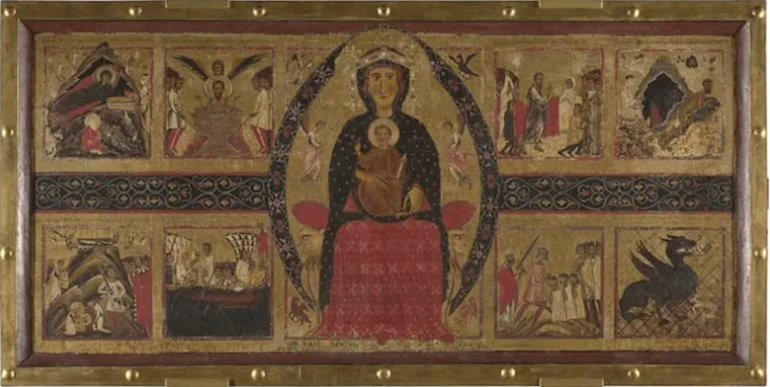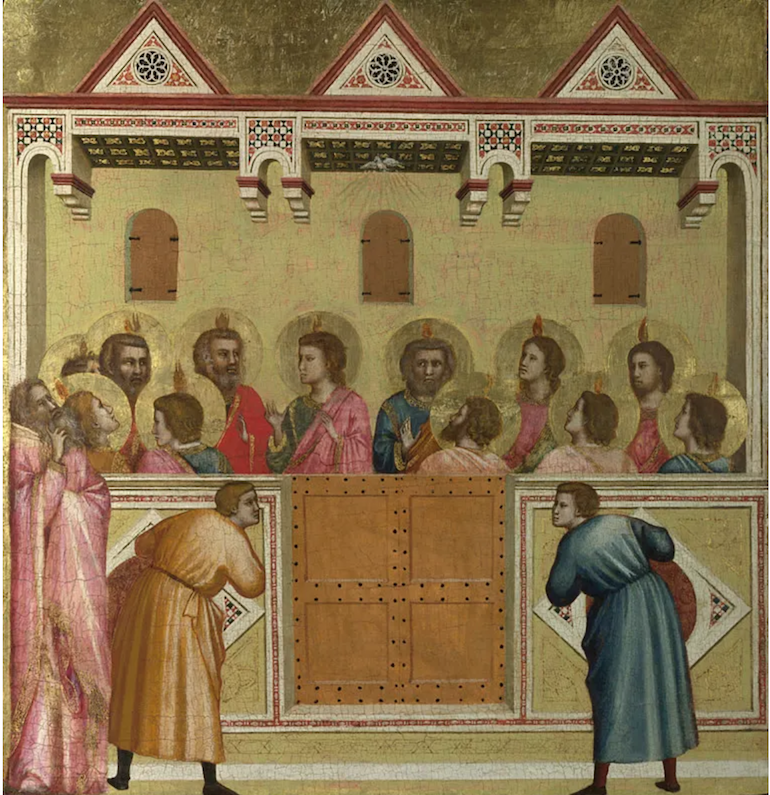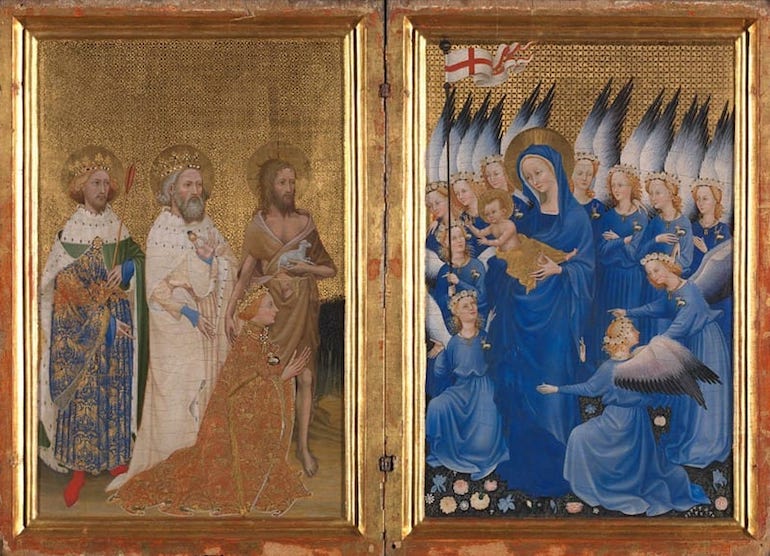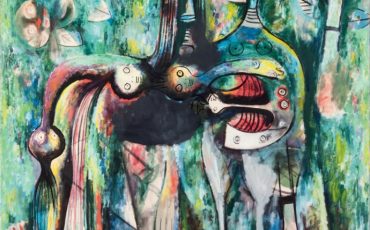When visitors come to London’s National Gallery it is an overload to the senses. There are so many styles, so many characters, so many stories. There is too much to take in!
Well, let me tell you where you might start… As the famous song says… ‘Start at the very beginning…!’
When entering via the modern Sainsbury Wing of the National Gallery you are introduced to some of the earliest paintings.
The ‘Renaissance’ is a term with which most of us are familiar with but this too needs explanation. We have heard of Leonardo da Vinci, Michelangelo, Botticelli, Raphael… Well, they are all represented here – you can see their art. These artists created fabulous masterpieces but they all learned their skills by being influenced by those who came before them. So who were the first influencers? And where did they start from?
The answer is what we now term as ‘Byzantine Art’, which is simple representations of stories – mainly those from the Bible or stories of saints gained from early literature. Art was very functional back in the C13th and stories would be told in pictures for church congregations who were largely illiterate. There were wooden panels or walls painted with flat images of the Virgin Mary, the Baby Jesus, Christ, and the Saints.
A fabulous example of this is by Margarito d’Arezzo who around 1260 put his name to just such a panel in an Italian church. He became one of the first people to take ownership of what we now call a work of art. He would have been a craftsman, paid for his commission by someone wealthy, but at least he got to sign his name – most artists were mere workmen or artisans – nameless.
 The Virgin and Child Enthroned, with Narrative Scenes by Margarito d’Arezzo at The National Gallery in London. Photo Credit: © The National Gallery.
The Virgin and Child Enthroned, with Narrative Scenes by Margarito d’Arezzo at The National Gallery in London. Photo Credit: © The National Gallery.
As you can see this is very flat, two-dimensional and the images are not sophisticated. There is no movement, there is no sense of space, no realistic faces. However, for the time it was quite beautiful and people would have marvelled at the gold and the bright colours in a very grey world. They would have worshipped in front of these images in a church illuminated by candlelight – how magical!
Just a few years later a revolution starts. A highly talented artist, Giotto di Bordone, takes art out of this flat world and puts some life and realism into those pictures. Now there is more of a sense of story-telling, it is easier to ‘read’ the images and there is a sense of movement. People are no longer hanging in space but are standing on solid ground. We see that we are starting to get some perspective with the walls of the building in which the people are standing being made clear to us. There is also some kind of emotion on the faces of the characters. Are they looking up in wonder? Are they chatting about what is happening? Are they laughing to themselves? The answer is in the story, which people of the time would have recognised very clearly.
Giotto is dubbed ‘The Father of the Renaissance’ – he is the person to kick off this massive revolution. This is the rediscovery or ‘rebirth’ of the art of the ancients – the art of Rome and particularly Greece, which came to be regarded as the pinnacle of great art.
 Pentecost painting Giotto and Workshop at The National Gallery in London. Photo Credit: © The National Gallery.
Pentecost painting Giotto and Workshop at The National Gallery in London. Photo Credit: © The National Gallery.
Artists who followed Giotto tried to achieve a much better perspective, more emotion, better detail and tell a more convincing story. This Renaissance took off in the 1400s. Florence was flourishing and there was a desire by the wealthy to pay for the art in the churches in order to show off their wealth and power. This was the catalyst of the Renaissance.
But before continuing … let’s pause a moment to consider another popular art movement just around this time. In the 1300’s we had a style which spread around Europe and influenced the Florentine artists but originated in other areas such as Flanders, France, or Burgundy as it was called. This is International Gothic.
Here the artists were not so preoccupied with movement, nor with the perspective which so consumed the Florentines. The focus here is on elegant characters, on realism in the faces, the images are serene and there is predominant use of gold and other precious colours. There is some expression in the faces and each face differs slightly from the next. Often expensive pigments are used and very delicate tracing of patterns on clothing.
One of the National Gallery’s most treasured paintings is in this International Gothic style. This is called the Wilton Diptych.
 Wilton Diptych painting at The National Gallery In London. Photo Credit: © The National Gallery.
Wilton Diptych painting at The National Gallery In London. Photo Credit: © The National Gallery.
Why is the Wilton Diptych such a treasure? Well, because we think it might be by an English artist (or maybe French). It most likely belonged to an English king and features no less than 3 English kings in it. Due to the change of religion in England in C15th and Civil War in C16th, and undoubtedly due to the Great Fire of London, we have lost 90-95% of all religious art ever created in England. That is why it is so very special.
So this is just the start of our journey through the Renaissance and through the story of art itself right up to Impressionism at the National Gallery. The story is then taken up on the other side of the river at Tate Modern for C20th – C21st art.
If you would like to learn more about the art of the National Gallery please consider a guided tour with a London Blue Badge Tourist Guide who can help you really see what is going on inside these beautiful paintings, and of course, tell some amusing anecdotes which will make your journey so much more enjoyable.







Leave a Reply